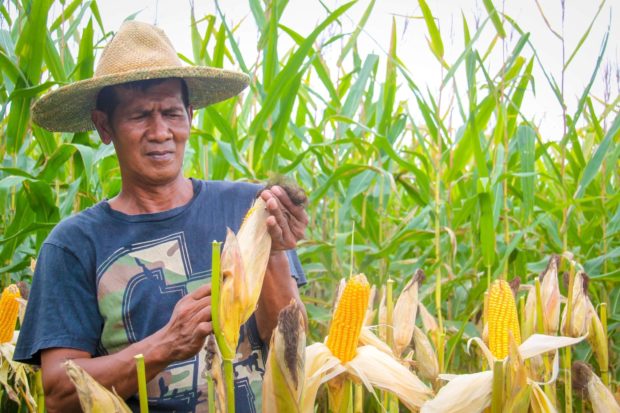Bio-fertilizer use eyed to aid corn farmers

The Department of Agriculture (DA) will now distribute bio-fertilizers to farmers in a move to boost local production and income of corn growers while lowering the cost of producing this commodity.
The agency promulgated the revised guidelines to include the provision of bio-fertilizers to corn farmers in its National Corn Program (NCP) which continue to grapple with the rising cost of inorganic fertilizers.
It is turning to bio-fertilizers as a cheaper alternative to inorganic fertilizers in order to meet the nutrients necessary to cultivate corn, one of the essential crops and staple foods of Filipino consumers.
Corn is used as an ingredient for animal feeds and several other industrial uses. Due to its several uses, there is an increasing demand of corn, especially for feed use.
Yield support
“To sustain the yield level of corn and income of farmers and lower the cost of production, NCP supports the provision of bio-fertilizers to corn farmers as a supplemental source of plant nutrients,” the DA said in a memorandum circular.
As explained by the DA, bio-fertilizers contain organisms that enhance the nutrient uptake of plants. It improves the plant’s root system, enhances nutrient absorption, provides resistance to pests and diseases, and enhances soil condition.
“At present, the cost of inorganic fertilizers drastically increased as a result of increasing price of oil in the international market. The high price of inorganic fertilizers significantly affects the cost of corn production in our country thus reducing the income of farmers,” it added.
The new rules have two objectives: Reduce the usage of inorganic nitrogen-fertilizers and promote the use of bio-fertilizers for corn through various extension activities such as information caravans and training.
Registered farmers
Ready to use bio-fertilizers will be distributed to corn farmers registered in the Registry System for Basic Sectors in Agriculture.
Distribution will be made through the active corn cluster organization. However, for individual farmers who do not belong to any cluster, the agricultural extension workers of local government units (LGUs) will provide them.
Farmer-beneficiaries will use bio-fertilizers based on the area to be planted and following the manufacturer’s recommended rate per hectare.
Aside from providing previous farming activities to their respective cluster organizations, corn producers are asked to implement other recommended production and postharvest practices.
The DA’s regional field office and the LGU will visit the area in order to assess the performance of corn production.
In the case of cluster organizations, they are to submit letters of intent and lists of recipients.
The groups will also hand over ready to use bio-fertilizers and consolidate data, reports and other pertinent documents on the status of bio-fertilizer distribution and utilization.
